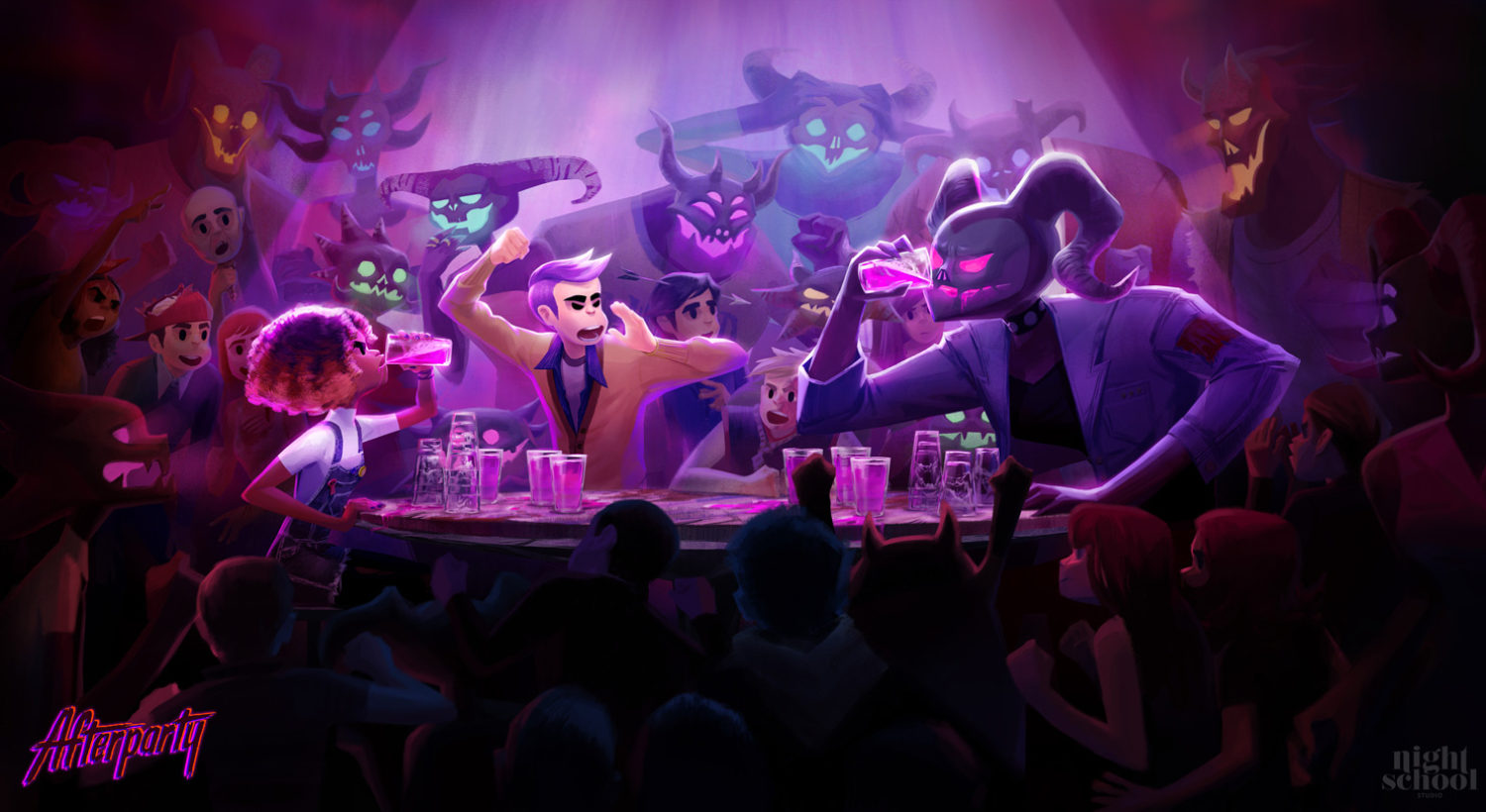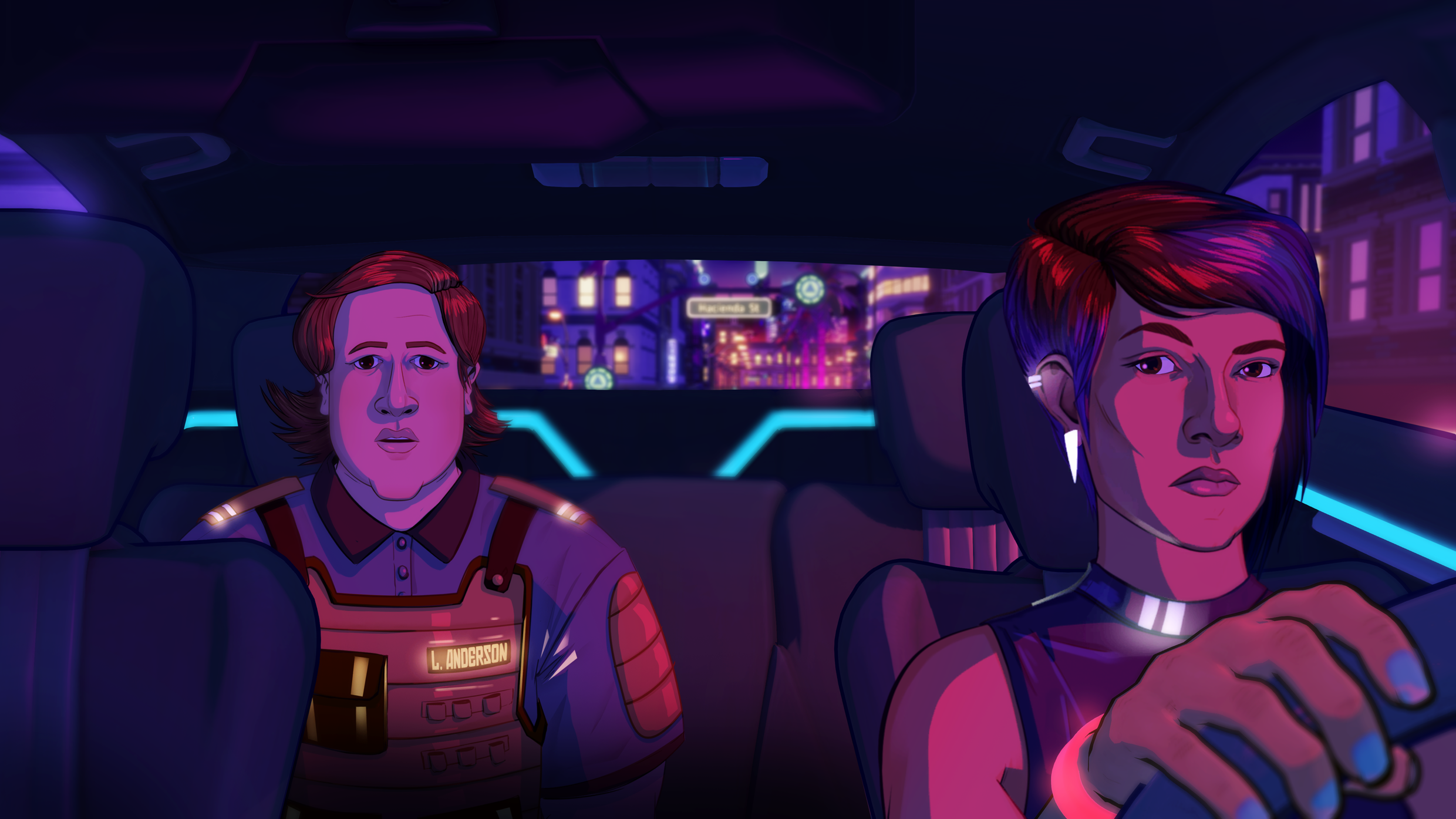The best game design programs, ranked by the Princeton Review 2020
Do Your Homework
Afterparty

Using your first draft wisely
Night School Studio, the team behind the critically acclaimed Oxenfree, was hoping to repeat their success with their follow-up, Afterparty, a similarly story-driven game about escaping Hell by drinking Satan under the table. Fun stuff, sure, but it came with some challenges for Night School’s artists.
Example: Night School’s lead engineer was tasked with creating an art production pipeline that aligned with the studio’s original concept art, but results were mixed. The original art was, of course, 2D, but turning it all into 3D wasn’t proving evocative enough. So what’s a developer to do? Night School ended up mapping their actual concept art onto transparent cards, adding some 3D elements to them, and pushing some parts into the foreground and background to help things pop. Thus, Afterparty gained the painterly style its designers originally dreamt up without losing anything in the transition to a final game.
Homework: Like Night School, you’ll often be working as a small team. How can you reduce the time it takes to produce the assets you need while staying true to your vision? Sometimes the answer is staring you in the face, and sometimes your first draft is the best fit, give or take some minor adjustments.
Reading Material: blog.nightschoolstudio.com
Neo Cab

Building a foundation for meaningful characters
You can make a game that’s incredibly fun to play, but it won’t mean much in the end without characters who aren’t giving us players something to latch onto. The developers at Chance Agency knew this going into Neo Cab, a narrative adventure about the last human cab driver in a futuristic capitalist dystopia.
Example: Chance Agency had the difficult task of designing a wide variety of characters who felt like real passengers going about their day, with their own interests and arcs. To achieve this colorful, diverse cast, writing lead/story editor Paula Rogers utilized a lot of the same techniques you’d see in general design projects: A thesis, mood boards, a full design brief, and a lot of personal love. With Neo Cab’s overarching theme being “stay human,” Chance Agency had to ask themselves how each specific character would interpret that line, and what drives, fears, or dialogue it might result in.
Homework: As a student, you’re probably pretty used to writing out a thesis or two. You probably start each game design project with an overall theme. When building your characters, think about how each of them would interpret that theme, and how every aspect of their lives might be colored by it, from clothes to body type to personality.
Reading material: https://blog.neocabgame.com/
Keep up to date with the most important stories and the best deals, as picked by the PC Gamer team.

